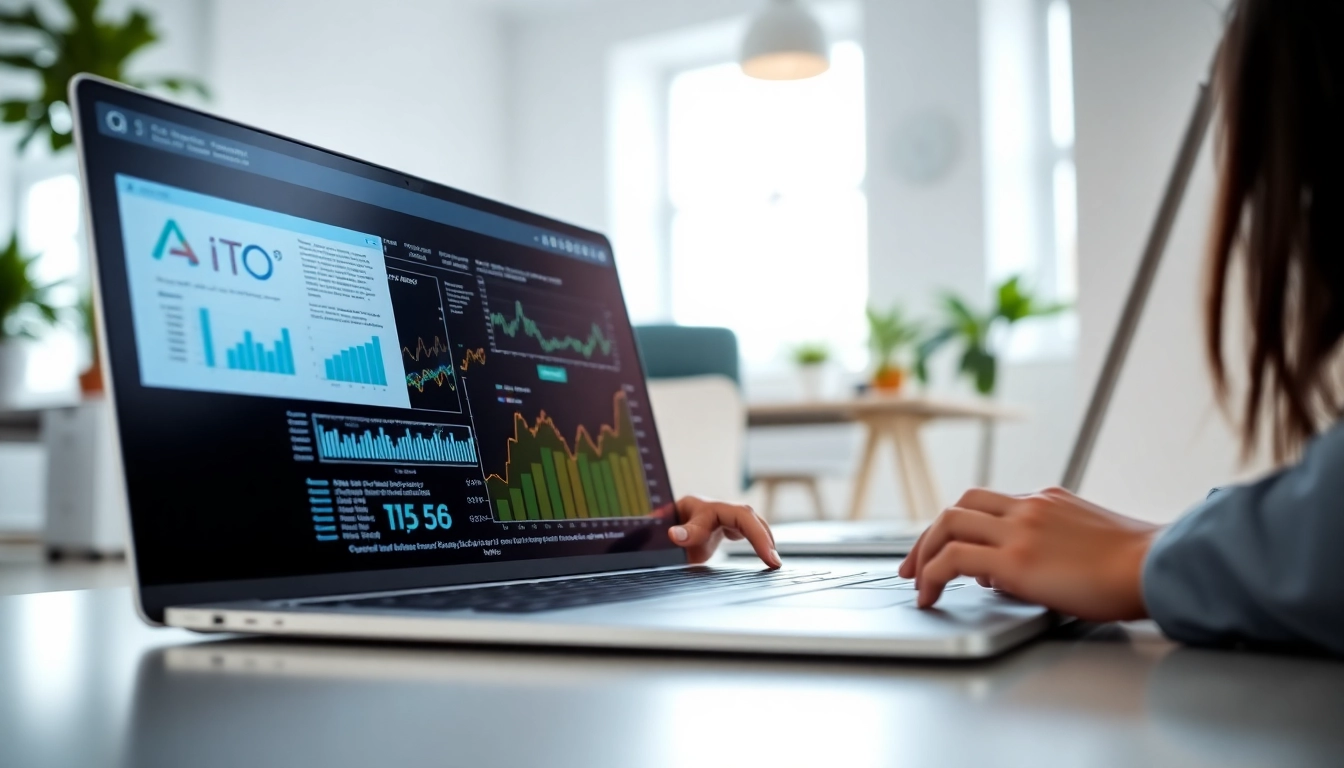Maximizing Efficiency with Qnap Storage Solutions for Your Business

Understanding Qnap Storage and Its Benefits
What Is Qnap Storage?
Qnap Storage refers to a range of network-attached storage devices designed to provide businesses and individuals with a scalable, secure, and high-performance solution for data management, storage, and sharing. Unlike traditional hard drives or local servers, Qnap Storage allows users to store their data centrally, ensuring easy access from multiple devices over a network. As organizations increasingly rely on digital data, having an efficient storage solution like Qnap Storage can be a game changer for productivity and efficiency.
Key Features of Qnap Storage
- Scalability: Qnap Storage systems offer multiple drive bays that allow users to easily add or swap drives as storage needs grow.
- Advanced Data Protection: Built-in solutions for RAID configurations and snapshots help safeguard valuable data from unexpected failures.
- User-Friendly Interface: The intuitive management interface simplifies configuration and maintenance, making it accessible for users of all skill levels.
- Multi-User Access: Supports simultaneous access from various users, ideal for collaborative work environments.
- Cloud Integration: Seamlessly connects with various cloud services to provide hybrid storage solutions, enhancing data accessibility and backups.
- Multimedia Streaming: Equipped with support for various multimedia formats, allowing users to stream directly to other devices.
Why Choose Qnap Storage for Data Management?
The decision to implement Qnap Storage is driven by the need for reliable data management. Businesses generate vast amounts of information daily, making it crucial to employ a storage solution that not only secures data but also ensures its availability. Qnap Storage offers robust features that enhance productivity, such as redundancy options and disaster recovery capabilities. Furthermore, the integration capabilities with other applications amplify its value, allowing users to create customized data workflows. For organizations looking to optimize their data management practices, Qnap Storage stands out as a compelling choice.
Setting Up Your Qnap Storage
Choosing the Right Qnap Storage Model
When selecting the appropriate Qnap Storage model, it is essential to assess your specific storage requirements, including data capacity, performance needs, and budget constraints. Models range from entry-level offerings suited for home use to enterprise-grade solutions designed for large-scale operations. Consider the following factors:
- Capacity: Determine how much data you need to store and plan for future growth. Select a model that provides adequate capacity and expandability.
- Performance: Evaluate the read/write speeds and processing power of various models, especially if you require extensive multitasking or multimedia streaming capabilities.
- Form Factor: Qnap offers both rack-mounted and desktop models; choose one based on your workspace and deployment preferences.
- Price: Establish a budget and choose a model that meets your needs without compromising essential features.
Installation Steps for Qnap Storage
Installing Qnap Storage can seem daunting, but it is a straightforward process. Here are the steps to follow:
- Unboxing: Carefully unpack the Qnap device and accessories, ensuring all components are accounted for.
- Drive Installation: Insert the appropriate hard drives or SSDs into the designated bays. Ensure that they are securely connected.
- Power Connection: Connect the power adapter and plug it into a wall outlet.
- Network Connection: Use an Ethernet cable to connect the Qnap device to your router or network switch.
- Power On: Turn on the device and wait for it to boot up, indicated by the status lights.
Configuring Your Qnap Storage for Optimal Performance
Once the physical setup is complete, you’ll need to configure your Qnap Storage for optimal performance. Follow these guidelines:
- Access the Qnap interface: Use a web browser to navigate to the device’s IP address, which can be found in the network settings of your router.
- Initial Setup Assistant: Follow the on-screen instructions provided by the Quick Setup Wizard to configure essential settings.
- Create Storage Pools and Volumes: Utilize Qnap’s Storage Manager to set up RAID configurations and create storage pools tailored to your data redundancy needs.
- Install Apps: Explore the Qnap App Center to install optional applications that can enhance functionality, such as backup solutions, multimedia servers, and security tools.
- Configure User Accounts and Permissions: Set up user accounts and define access controls to maintain data security and organized access.
Integrating Qnap Storage with Your Existing Infrastructure
Network Configuration for Qnap Storage
A successful integration of Qnap Storage requires proper network configuration. Here’s how to ensure optimal network performance:
- IP Address Assignment: Assign a static IP address to your Qnap device for consistent access. This can usually be configured in your router’s DHCP settings.
- Network Protocols: Ensure that your Qnap device is configured to use appropriate protocols (e.g., SMB, NFS) based on the operating systems accessing it.
- Link Aggregation: For increased throughput, consider using link aggregation features if your network infrastructure supports it.
Connecting Qnap Storage to Cloud Services
Integrating Qnap Storage with cloud services expands its capabilities, ensuring that data is easily accessible and securely backed up. Here are steps to connect your Qnap Storage to popular cloud platforms:
- Select Cloud Service: Determine which cloud service(s) align with your data management strategy, such as Google Drive, Dropbox, or Amazon S3.
- Install Cloud Sync App: Open the Qnap App Center and install the relevant cloud sync applications.
- Configure Sync Settings: Follow the prompts to log into your cloud account, setting up file sync preferences, such as selective sync and frequency.
Best Practices for Data Security with Qnap Storage
Data security is paramount when managing sensitive information. To protect your Qnap Storage, consider implementing these best practices:
- Regular Backups: Schedule regular backups of your data to both local and cloud storage to minimize data loss risks.
- Authentication Methods: Utilize multi-factor authentication (MFA) for user accounts to enhance security against unauthorized access.
- Firmware Updates: Regularly check for and apply firmware updates, which could include essential security patches and new features.
- Data Encryption: Encrypt sensitive data both at rest and in transit to ensure data privacy and security.
Advanced Features of Qnap Storage
Leveraging Qnap Storage for Virtualization
Qnap Storage is optimized for virtualization environments, supporting multiple virtual machines (VMs) efficiently. This capability is essential for businesses looking to maximize their resources:
- Virtualization Support: Qnap supports both VMware and Hyper-V, making it suitable for various virtualization needs.
- Snapshot Functionality: The ability to create snapshots of VMs allows for quick recovery in case of failure or corruption.
Utilizing Qnap Storage for Media Streaming
The media streaming capabilities of Qnap Storage cater to creative professionals and entertainment enthusiasts alike:
- Media Server Applications: Leverage applications such as Plex or Emby to stream media content seamlessly across devices.
- Transcoding Abilities: Certain Qnap models support real-time transcoding, allowing for optimal playback on devices with different formats or resolutions.
Integrating AI and Automation with Qnap Storage
Incorporating artificial intelligence (AI) and automation into your Qnap Storage can streamline workflows and enhance productivity:
- AI Photo Recognition: Use built-in AI tools to organize and tag photos using facial and object recognition.
- Automation Tasks: Create automated tasks such as file backup routines, data synchronization, and more through Qnap’s automation features.
Evaluating the Performance of Qnap Storage
Key Performance Metrics for Qnap Storage
When assessing the performance of your Qnap Storage, several key metrics should be monitored:
- Read/Write Speeds: Measure the read and write speeds to ensure they meet your performance expectations for various applications.
- Throughput: Evaluate the throughput under different workloads to assess how well the device handles simultaneous operations.
- Latency: Monitor data access latency, particularly for mission-critical applications requiring quick data retrieval.
Monitoring and Managing Qnap Storage Health
Keeping an eye on the health of your Qnap Storage is crucial to prevent downtime:
- SMART Monitoring: Utilize self-monitoring tools to evaluate hard drive health and receive alerts for any failures.
- Resource Monitoring: Use the Resource Monitor to track CPU usage, memory utilization, and network traffic, ensuring optimal resource allocation.
Scaling Your Qnap Storage as Your Needs Grow
As organizations develop, scaling your Qnap Storage becomes essential. Here are practical strategies for effective scaling:
- Adding Drives: Most Qnap models allow for additional drives to be added to existing storage pools, increasing capacity without significant downtime.
- Expanding Storage Pools: You can expand existing storage pools easily through the Qnap interface when additional drives are installed.
- Consider External Expansion: For further scalability, consider connecting additional storage enclosures to accommodate increased storage requirements.








